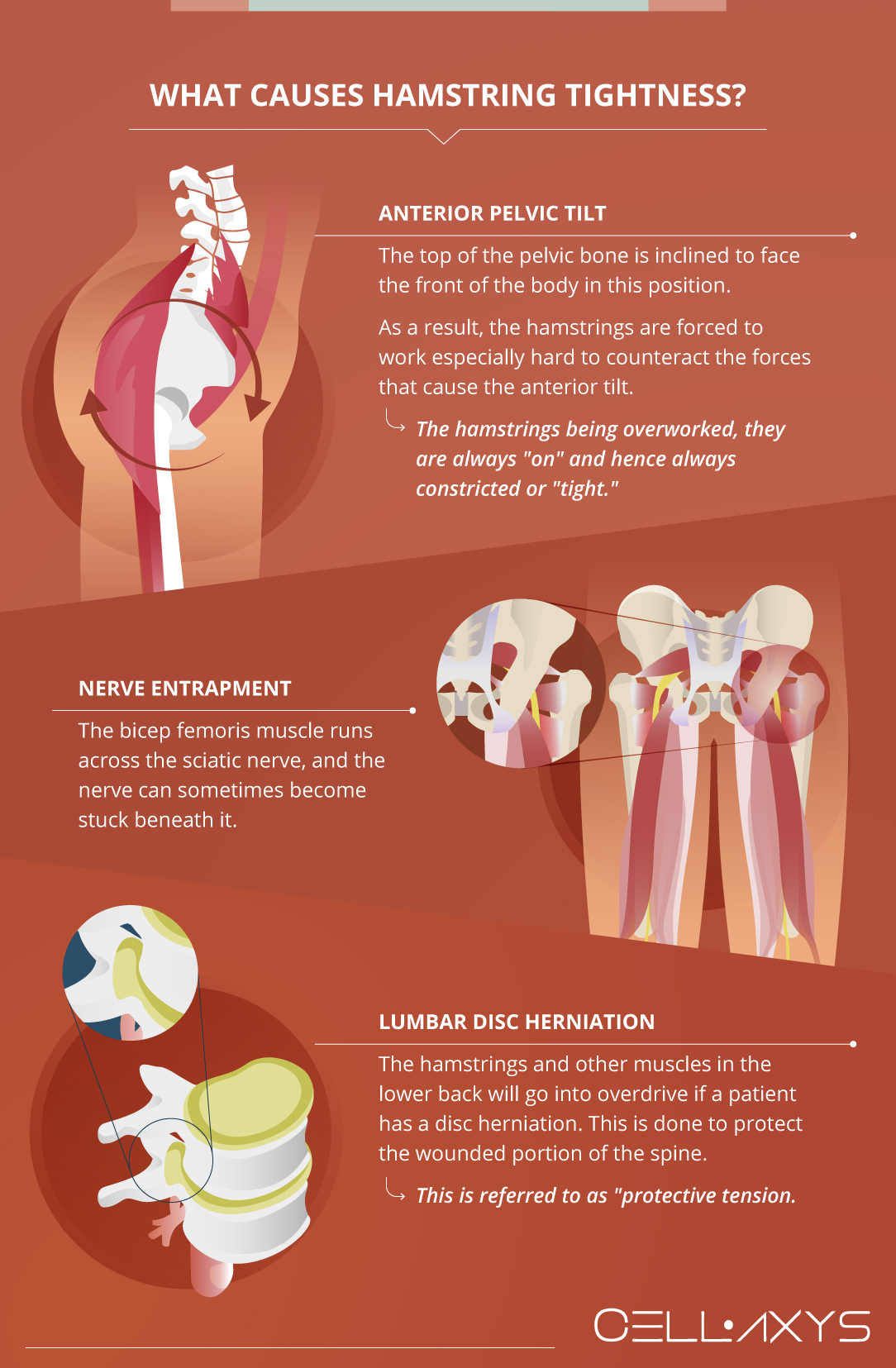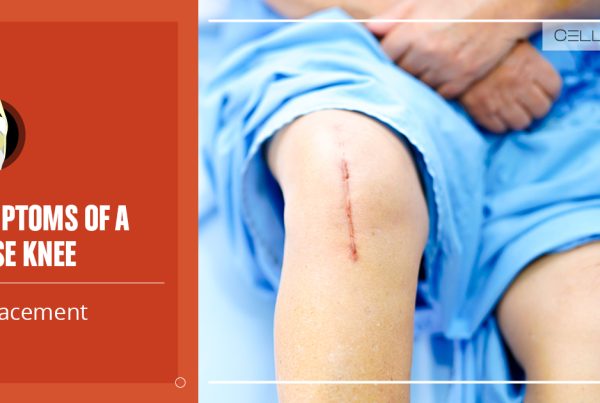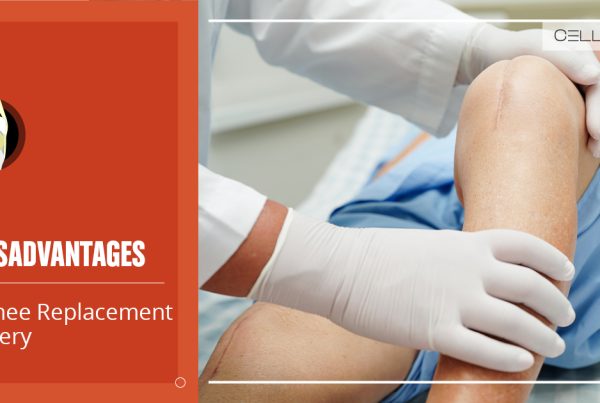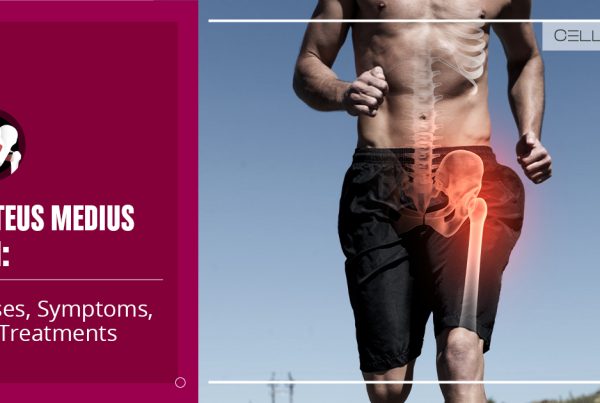Published on: April 6, 2020 | Updated on: November 5, 2024
Knee pain results from a complex series of biomechanical interactions. The hamstrings muscle group, located in the back of the leg, helps support the knee. This supporting role makes these muscles a key factor in knee-injury protection and knee-pain prevention.
Malfunctioning hamstrings create faulty movement patterns, which affect the alignment and health of the knees.
Anatomy of the Hamstring
The hamstring muscles in your legs are skeletal muscles. They’re voluntary muscles, which means you have control over how they move and function. At the back of your thigh, you have three hamstring muscles. These muscles are used to walk, climb stairs, squat, and conduct a variety of other leg actions.
The hamstring muscles run down the back of your thigh, beginning at the hip and ending at the knee. The tendons that connect your hamstrings to the bones in your pelvis, knee, and lower leg are called hamstring tendons.
The following are the three hamstring muscles:
- Biceps femoris: it is located on the outside of your thigh. It enables you to flex and twist your knee as well as extend your hip. The biceps femoris is a muscle with great length. It starts in the thigh and runs to the fibula bone’s head near the knee.
- Semimembranosus: located in the center of your thigh. This hamstring stretches your knee joint, extends your thigh at the hip, and provides hip and lower leg medial rotation.
- Semitendinosus: the semimembranous and the biceps femoris are located between the semimembranous and the biceps femoris. This hamstring performs the same role as the semimembranosus.
Do you have knee pain?
Fill out the form below to schedule your FREE virtual consultation
Causes of Hamstring Tightness

In most leg actions, the hamstring muscle is essential. They are an essential muscle group because they counteract the quadriceps’ activities by keeping the spine and pelvis in a neutral position when the legs and hips are moved. The following are the three most prevalent reasons for hamstring tightness:
- Anterior pelvic tilt: the top of the pelvic bone is inclined to face the front of the body in this position. Attached to the front side of the pelvic bone is the quadriceps (pushing the pelvis forward), whereas the hamstrings attach to the rear of the pelvic bone (drawing the pelvis backward, pulling it into the posterior tilt). As a result, when a person has an anterior pelvic tilt, the hamstrings are forced to work especially hard to counteract the forces that cause the anterior tilt. As a result of the hamstrings being overworked, they are always “on” and hence always constricted or “tight.”
- Nerve entrapment: the bicep femoris muscle runs across the sciatic nerve, and the nerve can sometimes become stuck beneath it.
- Lumbar disc herniation: a disc herniation, like nerve entrapment, can cause hamstring tightness. The hamstrings and other muscles in the lower back will go into overdrive if a patient has a disc herniation. This is done to protect the wounded portion of the spine. This is referred to as “protective tension.”
How Do Tight Hamstrings Relate to Knee Pain?
Because the hamstrings are biarticular, they have an impact on the knee, hip, and even the back. Most athletes with tight hamstrings might experience a variety of issues. They won’t be able to descend their hips past 90 degrees when squatting with heavy weight, for example.
This puts them in a safe mid-range zone, but it aggravates the problem since the hamstrings aren’t fully stretched. Then, when it’s time to blast out of the squat, the hamstring muscles aren’t used to their greatest extent. This can become a vicious cycle, resulting in hamstrings that are weak and tight.
The quadriceps will take over from the inefficient hamstrings if the hamstrings are overly tight and do not allow complete hip extension, putting a great load and strain on the knee. All four quadriceps converge above the knee to create a single tendon that connects to the top and sides of the patella before joining the tibial tuberosity through the patellar ligament.
As a result, if the quadriceps group works excessively hard, it will have an impact on the knee.
How Tight Hamstrings Cause Knee Pain
Tight hamstrings can create pressure or stress on the knee joint, giving rise to pain and discomfort.
When the hamstrings get tight, they also restrict the leg movement and prevent it from moving to and fro naturally. This way, there is improper movement, which increases the pain over time.
Another thing that happens with a tight hamstring is how you walk and run, which also changes. Since the knee is stressed, it takes in more shock than usual and further stresses out the joint, causing pain and injury. You will also feel less stability in the joint.
As a result, activities like taking the stairs or squatting will become painful.
What are the Symptoms of Knee Pain due to Tight Hamstrings?
Your body will always show you knee pain symptoms due to tight hamstrings. Here are specific cues you should keep an eye on:
- If you need to feel your knee getting tight, especially after a long period of activity or even by sitting.
- Bending and moving the knee will become difficult and painful.
- Sometimes, there’s discomfort and pain in the back of the knee.
- You will feel more pain when you move, especially during activities like jumping, running, or squatting.
- If you attempt to stretch a joint or engage in more strenuous activities, you will feel the pain getting intense, which means the hamstrings are overloaded, stressing the knee.
- Increased hip and lower back discomfort will exacerbate the knee pain.
Pain Management
While you can’t completely fix the pain or make it go away, there’s a lot you can do to manage it or bring it to tolerable limits.
- Engage in regular exercise using your hamstring, like stretching, bending, and lying down.
- Do strengthening exercises to support the muscles like glutes, quadriceps, etc.
- Lunges and squats, too, can help increase muscle strength.
- Maintain your posture, whether you are sitting, standing, or walking.
- Work on movement patterns to keep your form correct.
- Stay active and indulge in low-impact activities like swimming and cycling.
- Use foam rolling and massage therapy to loosen the muscles.
If your pain worsens or you feel sharp pains during movement like walking or running, you should see your doctor.
Also, notify your healthcare professional if you feel any of these in the knee:
- Swelling, redness, and pain
- Limited movement
- Painful hip and back
How to Treat Tight Hamstrings?
The simple answer to eliminate hamstring tightness is to loosen them through exercises including stretching. There are many helpful stretches for the lower body to prevent tightness that attributes to knee pain. Some more specific and effective stretches include:
Lunging hip flexor stretch:
- Kneel on one knee. Take the front thigh parallel to the ground, place the opposing foot flat in front of you.
- Lean forward, stretching the hip toward the ground.
- Tighten the butt; to allow a deeper stretch.
- Reach up with the arm on the same side as the knee on the ground. This will help deepen the stretch.
- Repeat on the other side.
Figure 4 stretch:
- Lie down on your back.
- Cross the left foot over the right quad, and bend the right knee.
- Hold the back of the right leg and gently pull it toward the chest.
- Repeat on the other side.
Standing hamstring stretch:
- Stand on the right foot with the left foot in front, heel on the ground, toes up.
- Hinge forward at the hips and bend the right knee sitting back a bit.
- Bend the right leg, keep the left leg completely straight with the weight on the edge of the heel.
- This stretches the hamstring of the straightened leg.
- Repeat on the other side.
Side lunge:
- Lunge out to one side, bending the knee and keeping the opposite leg straight.
- Try to keep the foot of the straight leg on the ground.
- Place fingertips on the ground in front to balance.
- This stretches the hips and inner thighs.
- Repeat on the other side.
Calf stretch:
- Stand in front of a wall with one leg straight behind and the other in front, slightly bent.
- Place hands on the wall and push against it.
- Keep your back leg straight, heel planted on the ground.
- Repeat on the other side.
Quad stretch:
- Lie on one side.
- Keep the bottom leg straight and bend the top knee towards the butt.
- Hold the top foot with a hand, pulling it toward the butt.
- Keep the hips stable.
- Repeat on the other side.
Stretching is effective, but there are also dangers of hyper-flexibility. Joint integrity should never be compromised in favor of excessive flexibility. Overstretching the hamstrings may affect joint stability, leaving the knees vulnerable to pain.
Tightness prevention
There are a few things that can stop tightness before it starts. Recommended activities include:
- Warm-up before engaging in different sports or other intense activities. Walking, mild jogging or simple exercises for at least 10 minutes can help avoid hamstring strain.
- Regular hamstring stretches before and after activities may also help prevent tightness. Try to take 3-5 minutes before and after sports or activities to stretch.
- An overall strong and fit body.
- Eat a healthy diet, and drink plenty of water to fuel and replenish muscles.
Alternative Treatments
Stretching can be a cure for most situations involving knee pain. However, in extreme cases, it may not be enough. Surgery is an option but is rather invasive and expensive.
Regenerative cell therapy allows patients to use their own cells and growth factors to help repair and regenerate damaged cells and tissues in their knees. The two regenerative therapies offered at CELLAXYS are:
Cell-based therapies
This treatment is also known as stem-cell therapy. It includes extracting healthy cells from the patient’s body, processing them, and reinjecting them into the injury site to promote healing. Depending on your knee condition, the doctor may recommend you one of the two types of cell-based therapies:
- Minimally Manipulated Adipose Tissue (MMAT) transplant. It removes healthy cells from your adipose (fat) tissue and reinjects them into the injury site. One advantage of MMAT is that the doctor can perform it in multiple locations of your knee if needed.
- Bone Marrow Concentrate (BMAC). This procedure extracts highly concentrated cells from your bone marrow and reinjects them into the injury site.
Both cell-based therapies take about 1.5 to 2 hours to complete. These are outpatient procedures, which means you can go home right after the process. The doctor will put you under anesthesia, so you will feel minimal pain. They may use live X-rays and ultrasound to detect the exact location of the injury.
Platelet-rich plasma (PRP) therapy
PRP therapy isolates platelets from the patient’s blood plasma, processes them, and re-injects them into the injury sites. Platelets are the healing components of your body, containing 10 Growth Factors to promote the growth of tissues. They also release chemical signals to attract healing cells from the blood and produce a web-like sticky structure called fibrin that supports the development of new tissues.
Many patients report that inserting platelets into the injury site accelerates their healing process. The procedure takes about 45 minutes and is a popular treatment for orthopedic, spine, and sports injuries.
Sources
Footnotes
- Bozkurt M, Can F, Erden Z, Demirkale İ. The influence of lateral tightness on lateral knee pain. The Pain Clinic. 2004;16(3):343-8.
- Patel DR, Villalobos A. Evaluation and management of knee pain in young athletes: overuse injuries of the knee. Translational Pediatrics. 2017;6(3):190.
- Fatima G, Qamar MM, Hassan JU, Basharat A. Extended sitting can cause hamstring tightness. Saudi Journal of Sports Medicine. 2017;17(2):110-4.
- Fredriksen H, Dagfinrud H, Jacobsen V, Maehlum S. Passive knee extension test to measure hamstring muscle tightness. Scandinavian journal of medicine & science in sports. 1997;7(5):279-82.
- Patil S, White L, Jones A, Hui AC. Idiopathic anterior knee pain in the young: A prospective controlled trial. Acta orthopaedica Belgica. 2010;76(3):356.
References
- How Tight Hamstrings Affect Your Knees, Plus Tips From Physical Therapists. Hinge Health. Accessed 2/25/2024.
- Hamstring Stretches. Knee Pain Explained. Accessed 2/25/2024.
- What to know about hamstring tendonitis. Medical News Today. Accessed 2/25/2024.
CELLAXYS does not offer Stem Cell Therapy as a cure for any medical condition. No statements or treatments presented by Cellaxys have been evaluated or approved by the Food and Drug Administration (FDA). This site contains no medical advice. All statements and opinions are provided for educational and informational purposes only.
Dr Pejman Bady
Author
Dr. Pejman Bady began his career over 20 years ago in Family/Emergency Medicine, working in fast-paced emergency departments in Nevada and Kansas. He has served the people of Las Vegas as a physician for over two decades. Throughout this time, he has been met with much acclaim and is now the head of Emergency Medical Services in Nye County, Nevada. More about the doctor on this page.
Dr Pouya Mohajer
Contributor
Pouya Mohajer, M.D. is the Director of Spine and Interventional Medicine for CELLAXYS: Age, Regenerative, and Interventional Medicine Centers. He has over 20 years of experience in pain management, perioperative medicine, and anesthesiology. Dr. Mohajer founded and is the Medical Director of Southern Nevada Pain Specialists and PRIMMED Clinics. He has dedicated his career to surgical innovation and scientific advancement. More about the doctor on this page.









